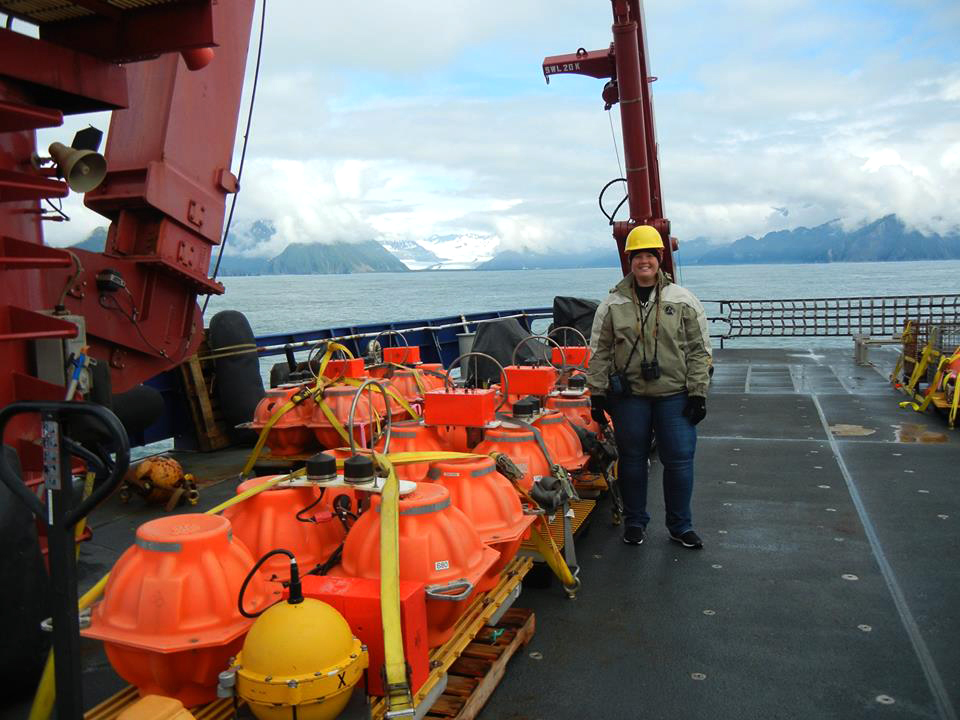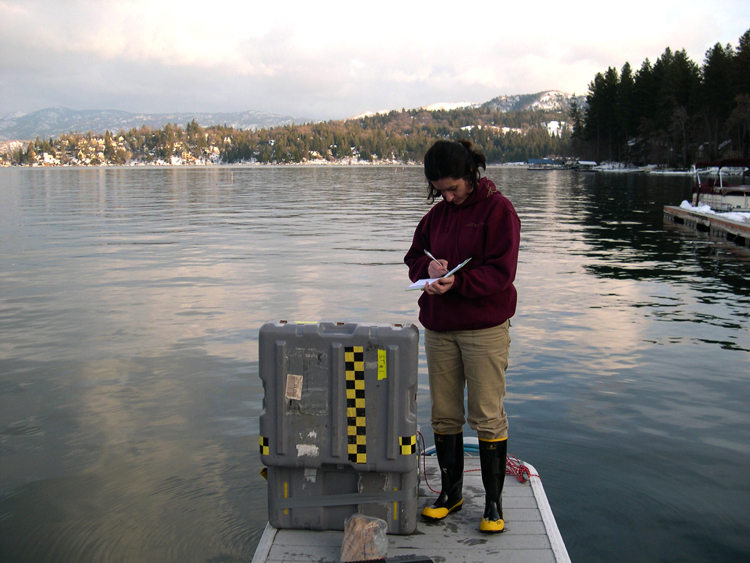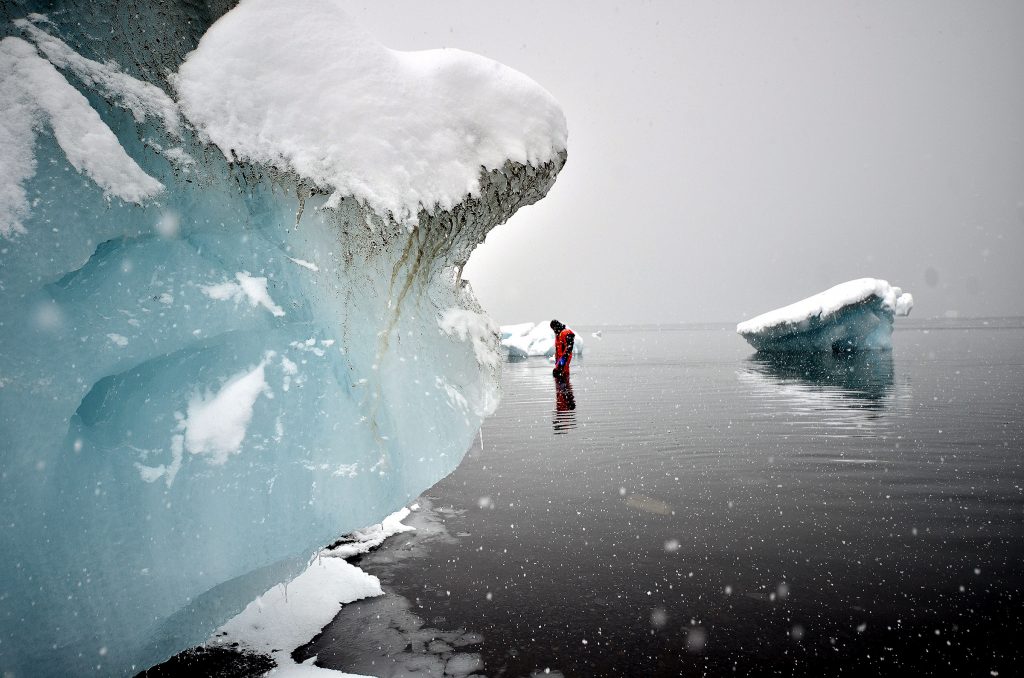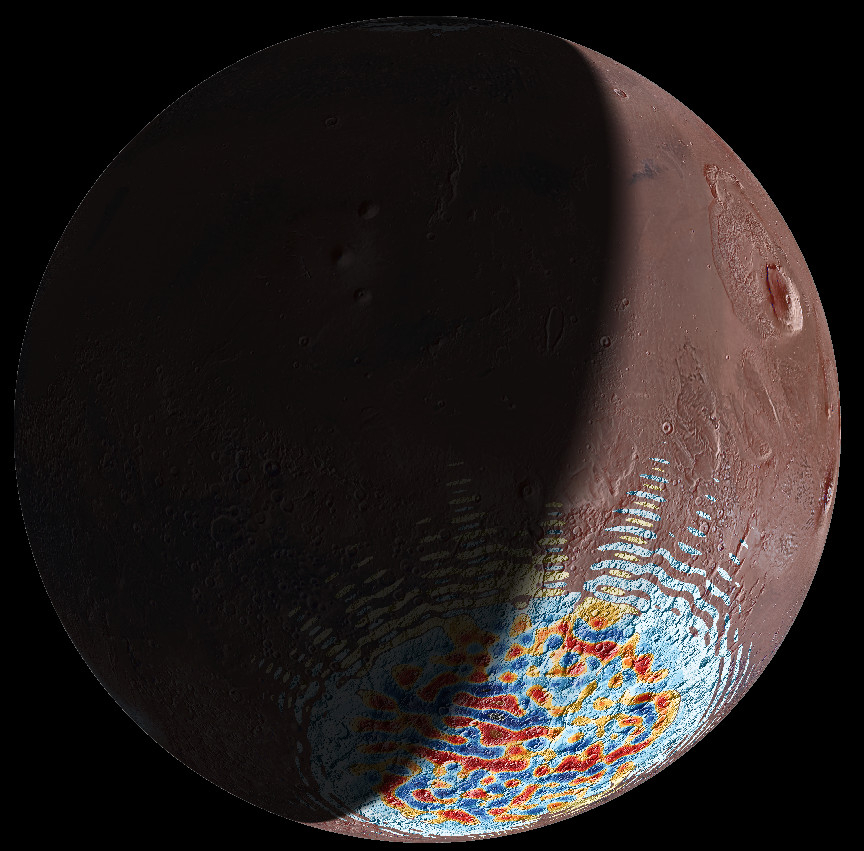Research within the Department of Geological Sciences tackles fundamental questions related to our planet and planetary systems through several integrated research programs, which are highlighted below.
Energy

Our energy research program tackles fundamental questions related to hydrocarbon and water sources to meet the ever-increasing demand for energy. Leveraging the vast collection of subsurface data available through the Geological Survey of Alabama and the Department of Geological Sciences, our interdisciplinary research focuses on integrating all elements of petroleum systems from source and reservoir to structure and seal.
We combine models derived from subsurface data with the study of outcrop analogs from both ancient and modern sedimentary systems. This wealth of data offers a natural laboratory for various disciplines, including structural geology, clastic and carbonate reservoir and source-rock studies, stratigraphic forward modeling, seismic data acquisition and processing, and petroleum systems analysis.
- Dr. Ibrahim Çemen conducts field-oriented structural geology studies and structural interpretation of reflection seismic data to determine the structural/sedimentological evolution of sedimentary basins. He also conducts field and laboratory studies in petroleum system analysis.
- Dr. Rona Donahoe studies water-rock interactions induced by waterflood and supercritical CO2 EOR, uses clay mineral identification to evaluate petroleum production potential, and performs batch and column experiments to develop trace elements and CO2 sequestration technologies relevant to the electrical power industry.
- Dr. Yuehan Lu analyzes trace compounds (aka. biomarkers) present in source rocks and oils to understand the origin and history of oils.
- Dr. Marcello Minzoni integrates petrographic, geochemical, petrophysical, and geophysical data to advance our knowledge of carbonate reservoir characterization and seismic interpretation of carbonate systems.
- Dr. Delores Robinson uses seismic and well log data as well as provenance studies to determine the evolution of basins and thrust belts through time.
- Dr. Rebecca Totten specializes in sedimentology and micropaleontology, and she works to integrate thin-section, core, and well log datasets to understand controls on depositional environments and reservoir heterogeneity, with a focus on dryland/fluvial systems.
- Dr. Bo Zhang is conducting research related to oil and gas exploration and development for unconventional and conventional plays. He develops cutting edge technologies to correlating seismic attributes to seismic stratigraphy and seismic geomorphology, well drilling, completion and production.
Environmental Geochemistry, Biogeochemistry, Hydrochemistry
Environmental Geochemistry, Biogeochemistry, and Hydrochemistry are disciplines that seek to understand the sources, distribution, mobility, and fate of chemical elements, nutrients, and contaminant compounds in near-surface environments. Isotopes, chemical tracers, and biomarkers allow the origin of natural and man-made solutes to be deduced.
- Dr. Natasha Dimova studies the sources and transformations of anthropogenic and naturally occurring contaminants as groundwater percolates through coastal aquifer systems. She also examines how synlas of heavy metal pollutants in the Mobile River Watershed are transported via suspended sediments to the coast and what is their fate after entering the Mobile-Tensaw Delta.
- Dr. Rona Donahoe specializes in trace elements, contaminant, and nutrient cycling in natural systems, employing fieldwork, analytical work, experimental simulations, and geochemical modeling to better understand these systems. She oversees the Geochemical Analytical Laboratory, which contains wet chemical analytical instrumentation and solid-phase digestion equipment.
- Dr. Yuehan Lu specializes in organic geochemistry and biogeochemistry. Her research focuses on understanding the source, composition, and fate of organic compounds and pollutants in water and sediments, and she oversees the Molecular Eco-Geochemistry (MEG) Laboratory, which houses instruments for extracting, purifying, separating, quantifying, and identifying organic compounds at trace levels.
- Dr. Geoff Tick studies contaminant fate and transport phenomena in aqueous and groundwater environments.
- Dr. Yong Zhang studies physical modeling and remediation techniques to address hydrochemical issues.
Geophysics, Tectonics, Structural Geology

The geophysics discipline focuses on investigating the internal structure and composition of the Earth and other planets/moons using approaches such as seismology, geodesy, gravity, magnetics, and electrical resistivity. These techniques are also employed on Earth in the exploration for natural resources, in environmental studies, and to mitigate geologic hazards.
Tectonics is a broad field that encompasses physical and chemical processes that shape our planet. This includes interactions between the Earth’s crust and the underlying mantle, subduction of oceanic crust, formation of the continents, mountain building, and basin formation.
Structural Geology deals with the form, arrangement, and internal structure of rocks, particularly the description and analysis of small to moderate geologic structures, such as folds, faults, shear zones that result from the application of deforming forces.
- Dr. Ibrahim Çemen conducts field-oriented research in active tectonics along major fault zones in extensional, compressional, and strike-slip terranes in the Eastern Mediterranean Region.
- Dr. Samantha Hansen is an earthquake seismologist who investigates large-scale tectonic structures and geodynamic processes, using methods such as seismic tomography, receiver functions, and anisotropy measurements.
- Dr. Alain Plattner studies the evolution of the crust and core of terrestrial planets and moons from their magnetic fields, as observed by satellites. He also uses geophysical methods, such as ground-penetrating radar and electrical resistivity tomography, to image the shallow subsurface with applications in archaeology, environmental studies, geomorphology, and geoengineering.
- Dr. Delores Robinson studies the evolution of orogenic systems through field mapping, reconstruction of fold-thrust belts, and provenance studies, and she explores the links between structure, sedimentation, and erosion using thermochronology and geochronology.
- Dr. Harold Stowell applies isotope geochemistry to understand the processes and rates of processes that form the continental crust and result in mountain building in magmatic arcs above subducting oceanic crust.
- Dr. Bo Zhang is conducting geophysical signal analysis by using computer-assisted pattern recognition and machine learning.
High-Temperature Geochemistry and Petrology
High-temperature geochemistry and petrology are fields that encompass a wide range of studies, from the formation of most rocks through igneous processes below the Earth’s surface, to their formation through volcanic processes above the surface (volcanology). This field also includes the study of fluids and processes that have caused solid-state changes through thermal or regional metamorphism. Mineral characteristics including composition and textural features are studied to help understand their formation parameters. Geochemical techniques are used to determine element and isotopic abundances within materials and to assign chronometric information to specific samples.
- Dr. Julia Cartwright uses petrological techniques to characterize extra-terrestrial materials to determine compositional data. She also uses isotopic techniques to determine the overall isotopic compositions of meteorites to highlight significant processes and to characterize the age of selected phases.
- Dr. Kimberly Genareau studies the textural, chemical, and magnetic effects of lightning on natural and manufactured materials using lightning simulation experiments and microanalytical methods, including electron microscopy.
- Dr. Harold Stowell constructs thermodynamic phase diagrams for rocks in order to estimate the temperatures and pressures of metamorphic mineral growth and the pressure-temperature-time paths of rocks in the crust.
- Dr. Matthew Wielicki’s research interests involve geochemical methods for investigating the conditions on early Earth during the origin of life, constraining the amount of continental lithosphere through time, understanding the flux and timing of asteroids impacts and their association with major extinction events, and the evolution of the Himalaya and the Tibetan Plateau.
Hydro3

Hydrogeology, hydrology, and hydrometeorology are multidisciplinary fields that investigate water quality and water quantity impacts across different and combined portions of the hydrologic cycle.
Examples include understanding energy and water flux across the land surface and exchanges to the atmosphere, surface water, and groundwater; water movement and water resource impacts on streams and groundwater due to both temporal scarcity (drought) and abundance (flooding), as well as other climate factor impacts; ecological impacts due to anthropogenic and natural inputs in the environment; changes in water quality and ecological health across transitions from freshwater to coastal waters and coastal embayments; transport and fate of contaminants in groundwater, surface water, and vadose zone; development/application of novel remediation for contaminated water (surface water and groundwater) systems; and the development of novel mathematical models for surface-water, groundwater, unsaturated flow, and contaminant fate transport to improve our mechanistic understanding of such processes.
- Dr. Natasha Dimova studies groundwater-surface water interactions and associated nutrient and contaminant changes at the ocean-land interface.
- Dr. Rona Donahoe employs geochemical modeling to understand water-rock interactions serving as solute sources and sinks in groundwater systems.
- Dr. Yuehan Lu uses field measurements and geochemical tracers to understand basin-scale hydrological cycles and their influences on water quality and ecological habitats.
- Dr. Geoff Tick studies the fate, transport, and remediation of hazardous and emerging contaminants (i.e. petroleum hydrocarbons, chlorinated solvents, pesticides, pharmaceuticals, and per- and polyfluoralkyl substances) in groundwater and the vadose zone.
- Dr. Yong Zhang studies computational hydrogeology, especially theories/modeling of physical and chemical processes in the water cycle.
Paleo3

Paleontology, paleoclimatology, and paleoecology are closely intertwined subjects that investigate the history of organisms and their environment.
The methods employed in these fields are diverse and may include exploration and the analysis of fossils, geochemical analysis of skeletal remains, understanding how biomineral skeletons grow, and the analysis of the sediments that may contain fossils.
Paleo research informs our understanding of evolution, the history of the Earth, fundamental biology and ecology, and climate/environmental change, including anthropogenic impacts.
- Dr. Fred Andrus studies climate and environmental change, especially how it relates to human history by analyzing fossil and archaeological remains. He often utilizes the isotope biogeochemistry and growth patterns of shells and skeletons to measure past temperature, ocean currents, precipitation, and pollution.
- Dr. Yuehan Lu uses ‘biomarkers’ to understand changes in organisms and the environment over geologic time. She is working to understand the environmental conditions and triggers of the Late Devonian mass extinction by analyzing the composition and compound-specific isotope of biomarkers from black shales in tandem with regular paleoenvironmental proxies (e.g., trace metals, bulk carbon isotopes).
- Dr. Marcello Minzoni applies a variety of integrated sedimentological, paleontological, and geochemical proxies to quantitatively evaluate the controls on carbonate sediment production and the change of carbonate factory types through time. His recent research focuses on assessing oceanographic and paleoclimatic impacts on Pleistocene-Holocene carbonate sediment production and accumulation, including coral reefs, in Cuba and Florida Bay.
- Dr. Alberto Perez-Huerta conducts research on biomineralization and paleoecology, with a special emphasis on the chemical analysis of recent and fossilized biomineralized structures to better understand biomineralization processes and the use of chemical proxies for paleoenvironmental reconstructions.
- Dr. Thomas Tobin studies the causes and effects of the End Cretaceous Mass Extinction through a combination of field and laboratory work. Primarily, he employs light stable isotope analysis of biogenic and sedimentary carbonate to reconstruct environmental conditions and organism behavior.
- Dr. Rebecca Totten studies glacial response to climate variability and oceanographic changes during the Holocene. She specializes in diatom and foraminifera microfossil proxies for sea ice concentration and ocean masses in West Antarctica as well as multi-proxy analyses to evaluate the impacts of sea level rise, climate, and storms on coastal estuaries.

Planetary Science
Planetary science involves the remote study of planetary and celestial bodies using telescopic, satellite, lander, and rover data as well as laboratory analysis using recovered extra-terrestrial materials like meteorites. Our aim is to understand the formation of our solar system and the geologic structure and evolution of the planets.
- Dr. Julia Cartwright studies meteorites to better understand the formation and evolution of our Solar System through compositional and chronological studies. Her main specialties include noble gases (He-Xe), halogens (Cl, Br, I), chronometry (e.g. Ar-Ar, U-Pb) and advanced microscopy techniques including Atom Probe Tomography (APT).
- Dr. Alain Plattner uses magnetic data collected by satellites orbiting the planets and moons in our solar system to understand the internal structure and geologic history of these planets. Short-scale magnetic fields arising from the crust of a terrestrial planet recorded its crustal evolution, while large-scale magnetic fields stemming from a planet’s core reveal dynamics deep within that planet.